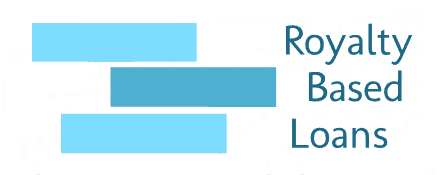Revenue-based financing is an exceptionally fastest and easiest way of securing financing for your company even when you are new in business, with bad credit ratings or even when not making huge profits. It is also a unique form of small business loan when it comes to deciding the total loan termination amount. Loan termination is based on a fixed total dollar amount also known as Repayment Cap which is agreed between the borrower and the lender at the beginning.
In revenue-based financing, a borrower (company, entrepreneur) borrows money, in return for the financer (lender) being paid a small percentage of future monthly revenues.
The loan termination amount in this case also known as repayment cap. This is decided at the beginning between a borrower and the lender. The Repayment cap is fixed to about 1.5x-2.5x of the principal amount. The monthly payments are not set but are then fix the percentage of monthly revenue.
Revenue-based Loan Example:
The loan Principal Amount (Amount borrowed): $250k
Payment: 5% of monthly revenue
Revenues in January: $100k, then the company pays the investor: $5000
Similarly, if Revenues in February: $80k, the company pays the investor: $4000
March
April.
.
The above continues when until the repayment cap of 1.75x (1.75 x 250k principal): $437.5K
What is Loan termination amount or Repayment cap in Revenue Based Financing?
Repayment cap is the final or a cumulative payment that is agreed upon a borrower and lender reaches a fixed total dollar amount. It is the maturity amount borrowers pay after which a loan is settled. The value of Repayment cap can be anything between 1.5x to 2.5x of the principal value.
How a Repayment Cap in Revenue financing is different compared to loans?
A fixed “Repayment Cap amount” is agreed (in the beginning) between a borrower and a lender. That fixed dollar amount is expected to be paid by the borrower and only then the loan is considered fully repaid.
The monthly payment is based on the percentage of his company’s revenue and a borrower is expected to pay until the total repayment value reaches the repayment cap (of say 1.5x in this case)
So here in RBF, the biggest difference is the interest rate is not determining your “Repayment Amount”.
Thus there are no set time periods for repayments. The loan termination tenure depends on the revenue of the borrower/company. If the company grows faster the loan termination happens faster.
How a Repayment Cap in Revenue financing is decided?
Repayment Cap in revenue-based financing depends on many factors, but the main factor driving your repayment cap is the “risk”. There is a complex calculation involving various factors of risks which differs from company to company. The biggest concern any lender has is if the borrower possesses the ability to repay the entire loan amount in the stipulated time (or before in case of RBF).
Some of the factors taken into consideration while deciding the repayment capital in revenue based financing are as follows.
- A number of years in the business: This is to determine the experience or the sustainability of the company’s board or the entrepreneur himself. Experienced management is always risk-free proportion for the lenders
- Nature of the business (from its business model): Derived from its business model, Nature of business determines the companies the path which the company is following in current situation and its course in the future. This also involves knowing the revenue streams of the company so the lender is assured of the repayment of the loan. There could be the case where the business is seasonal and thus these factors needed to be taken into consideration while deciding the repayment Cap.
- Revenue generated from the business: Taken from the financial statement. This is to know the financial health of the company, the future revenue potential all depends on the revenue generated from the business.
- Past history of the company: Again, this one is taken from the company’s financial statement it is to determine if the loan payment history of the company is good, company and management habit.
The above listed factors are essential in determining the factor of the Repayment cap. But in a gist, if the risk involved in lending is more than the repayment cap increases (2.5 to 3x) and if the risk factor is less the repayment cap is anywhere between (1.5x to 2x) depending on the above factors.
